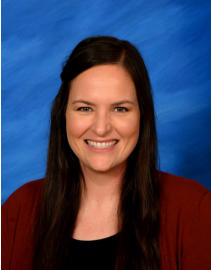











2025 Charleston School District
Contents

Charleston Public Schools
Gifted/Talented Program
Program Overview:
The Gifted and Talented Program of Charleston serves students in grades K-12. In grades K-2, enrichment activities
designed to introduce and develop skills beyond the basic curriculum are provided for all students. Identification for our
pullout program begins in 3rd grade. Identified students in grades 3-4 are served in a pullout resource room setting with
a scheduled weekly period of 150 minutes. Students in grades 5-8 receive enrichment from their highly qualified teachers.
Students in grades 9-12 may choose from a wide variety of enrichment activities involving higher level thinking skills and
problem solving strategies, such as Pre-AP, AP, and concurrent college level courses. Students in grades 5-12 also
participate in monthly meetings to discuss personal goals and community activities.
What is Giftedness?
Students show giftedness when their ability is significantly above the norm for their age. Giftedness may manifest in one
or more of the following domains: intellectual, creative, artistic, leadership, or in a specific academic field such as
language arts, mathematics, or science.
It is difficult to estimate the absolute number of gifted children in the U.S. because the calculation is dependent on the
number of areas and the method used to identify gifted children. However, many consider children who are in the top 10
percent in relation to a national and/or local norm to be a good guide for identification and services.
It is important to note that not all gifted children look or act alike. Giftedness exists in every demographic group and
personality type. It is important that adults look hard to discover potential and support gifted children as they reach for
their personal best.

Referrals
How do I refer a student for the Gifted and
Talented Program?
Pick up a referral form at the elementary,
middle, or high school offices. Please return it
by the end of September for the fall semester
testing cycle or the end of February for the
spring semester testing cycle. If you have
questions regarding the referral process,
please contact Mrs. White.

Jessica White
GT Coordinator
jessica.white@tigersmail.org
479-965-2460
2025 Charleston School District
Contents

Charleston Public Schools
Gifted/Talented Program
What is Giftedness?
Students show giftedness when their ability is significantly
above the norm for their age. Giftedness may manifest in
one or more of the following domains: intellectual, creative,
artistic, leadership, or in a specific academic field such as
language arts, mathematics, or
science.
It is difficult to estimate the absolute number of gifted children
in the U.S. because the calculation is dependent on the number
of areas and the method used to identify gifted children.
However, many consider children who are in the top 10 percent
in relation to a national and/or local norm to be a good
guide for identification and services.
It is important to note that not all gifted children look or act
alike. Giftedness exists in every demographic group and
personality type. It is important that adults look hard to
discover potential and support gifted children as they reach for
their personal best.








Jessica White - GT Coordinator
jessica.white@tigersmail.org 479-965-2460
Program Overview
The Gifted and Talented Program of Charleston serves
students in grades K-12. In grades K-2, enrichment activities
designed to introduce and develop skills beyond the basic
curriculum are provided for all students. Identification for our
pullout program begins in 3rd grade. Identified students in
grades 3-4 are served in a pullout resource room setting with
a scheduled weekly period of 150 minutes. Students in
grades 5-6 receive enrichment from their highly qualified
teachers, and in grades 7-12, students may choose from a
wide variety of enrichment activities involving higher level
thinking skills and problem solving strategies, such as Pre-AP
and AP courses. Students in grades 5-12 also participate in
monthly meetings to discuss personal goals and community
activities.
Referrals
How do I refer a student for the Gifted
and Talented Program?
Pick up a referral form at the elementary, middle, or high
school offices. Please return it by the end of September for
the fall semester testing cycle or the end of February for the
spring testing cycle. If you have quesitons regarding the
referral process, please contact Mrs. White.